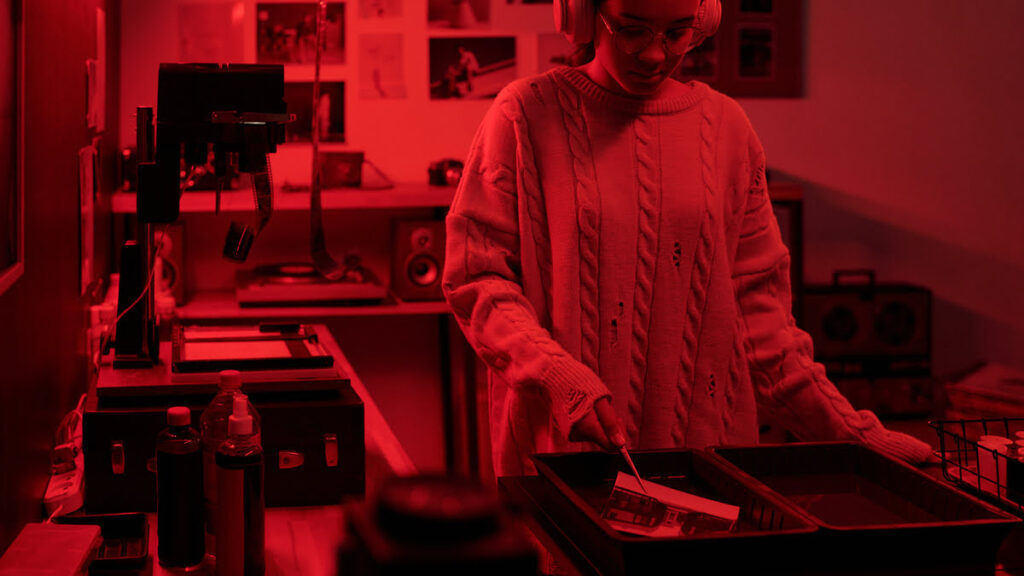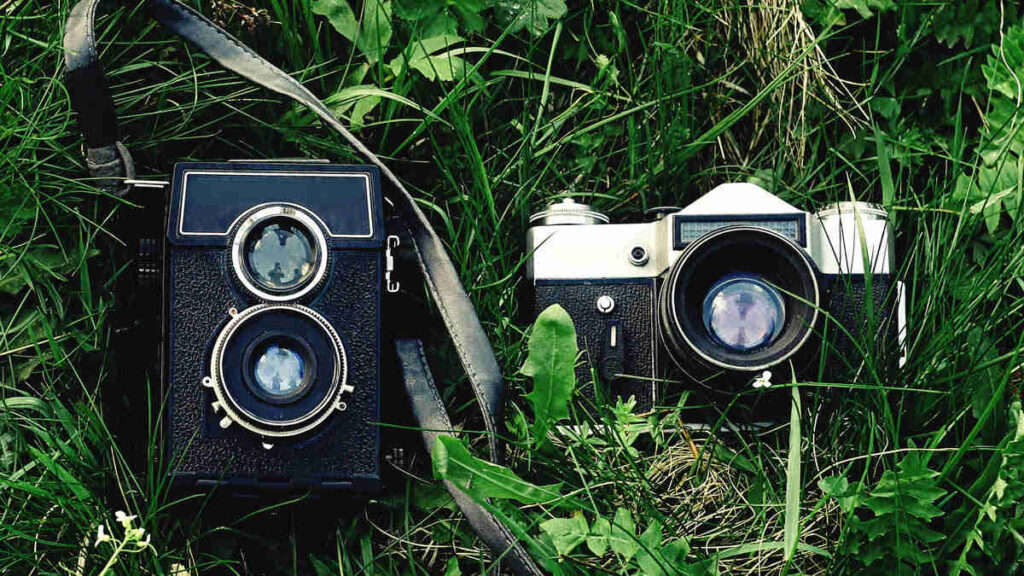
The history of photography includes many turning points that transformed the way we capture the world. One such moment came with the introduction of a seemingly ordinary substance – gelatin – into the realm of image-making. Previously known mostly in cooking and pharmaceuticals, gelatin took on new significance as the foundation of analog photographic technology. It was the gelatin emulsion – a thin, light-sensitive layer based on gelatin – that revolutionized image preservation.
From the late 19th century through the twilight of the darkroom era, gelatin emulsions formed the basis of photographic film, glass plates, and light-sensitive papers. They increased sensitivity, reduced exposure times, and simplified the overall photographic process. Thanks to them, it became possible to take photos without a tripod or complex darkroom setups – opening the door to street photography and reportage. Photographers no longer had to prepare light-sensitive materials immediately before taking a picture or develop them right afterward. They could work faster, with greater freedom and mobility.
A Breakthrough in Analog Photography: The Gelatin-Silver Process
By the end of the 19th century, photography stood at the edge of a significant technological shift. The dominant method until then had been the collodion wet-plate process, which required immediate preparation and development – even when working outdoors under makeshift lab conditions. The breakthrough came with the development of the gelatin-silver process, which allowed for the creation of ready-to-use light-sensitive materials that were durable and suited for mass production.
In this process, silver halides – mainly silver bromide – are suspended in gelatin and applied to glass plates or other substrates. Unlike earlier methods, gelatin emulsions did not need to be freshly prepared before exposure. Once dry, they retained their light sensitivity, making it possible to separate the moment of exposure from the development process – a major convenience and innovation in photographic practice.
Why Gelatin?
What made gelatin a breakthrough material for analog photography? Its physical and chemical properties turned out to be perfectly suited to the demands of photographic processes. When dry, gelatin forms a transparent, elastic, and durable layer. When moistened, it swells evenly and allows for uniform dispersion of silver halide crystals – the key light-sensitive component of photographic emulsions.

Unlike other binders tested in the 19th century, gelatin did not react negatively with silver compounds. It also exhibited excellent adhesion to various substrates, such as glass, plastic, and paper. Just as importantly, it withstood the processing chemicals used in development and fixing baths. The result was a stable, reproducible image of high archival quality – a crucial feature both in artistic and scientific photography.
The Legacy of the Gelatin-Silver Emulsion
Although the gelatin-silver process was eventually replaced by newer technologies, its impact on the development of analog photography is impossible to overstate.
It paved the way for photography to become portable, accessible, and reproducible.
Today, amid the revival of traditional techniques, gelatin emulsions continue to inspire artists and enthusiasts who seek image depth, material authenticity, and the unmistakable character of analog photographs.
The Origins of the Gelatin Emulsion
Although the gelatin emulsion would go on to become one of the cornerstones of analog photography, its beginnings were purely experimental.
The invention is credited to Richard Leach Maddox – a physician and passionate amateur photographer – who, in 1871, published a groundbreaking article in the British Journal of Photography. In it, he proposed replacing collodion – the light-sensitive binder then in use – with natural gelatin. This innovation not only simplified the preparation of photographic materials, but also paved the way for the production of so-called “dry plates”– ready-to-use, stable, and easy to store.
Just a few years later, the technique was significantly improved – most notably by Charles Bennett, who in 1878 developed a method to increase the emulsion’s light sensitivity. These advancements led to rapid adoption of the gelatin process, which soon gained widespread recognition in the photographic community and almost completely replaced the wet collodion method.
The Beginnings of Mass Production of Dry Plates
In the early days, emulsions were applied by hand – a time-consuming process with highly variable quality. However, by the late 1870s, industrial production had begun. In 1878, the London-based company Wratten & Wainwright launched commercial manufacturing of dry photographic plates. A year later, the American firm Keystone Dry Plate Works followed suit, and in 1880, George Eastman – later the founder of Kodak – entered the field as well.
The rapid growth of this new industry led to gelatin emulsions being produced by major players in the market, including Agfa, Ilford, and Lumière. Their efforts laid the foundation for an entirely new era in the history of photography – one that was accessible, reproducible, and based on ready-to-use light-sensitive materials.
Gelatin Emulsion as a Precursor to Amateur Photography
The emergence of the gelatin emulsion not only streamlined the photographic process, but also revolutionized its accessibility. For the first time in the history of light-sensitive imaging, the technique became simple and convenient enough to be used not just by professionals, but also by individuals without advanced technical resources. Ready-to-use gelatin dry plates, combined with increasingly compact cameras, brought photography out of the studio and into everyday life.
Between the 1870s and 1890s, this method became the standard among photography enthusiasts, many of whom had previously lacked access to complex chemical processes. For many, it was the first opportunity to preserve their own images – whether family portraits, travel scenes, or everyday moments. The gelatin emulsion played a key role in popularizing photography and helping it transition from a professional craft to a personal practice.

The Decline of Dry Plates
Although this technique dominated for several decades, it was eventually displaced by newer solutions – most notably nitrocellulose film negatives, which were thinner, more flexible, and easier to process. This transition accelerated at the turn of the 20th century, and by the 1920s, glass plate emulsions had largely fallen out of use. Nonetheless, it was dry plates that marked the beginning of photography as an accessible medium – one that fundamentally changed humanity’s relationship with light-sensitive imagery.
How is Gelatin Emulsion Made?
The process of producing a gelatin emulsion is a complex chemical operation that blends laboratory knowledge with artisanal expertise.
The final image quality – sensitivity, contrast, resolution, and grain structure – depends heavily on how the emulsion is made. Though it may seem like a technical detail, this step determines both the expressive potential of analog photography and the visual character of the final image.
As mentioned earlier, a gelatin emulsion is a suspension of microscopic silver halide crystals (typically silver bromide or silver chloride) held within a gelatin matrix. To create it, a solution of silver nitrate must be carefully combined with a solution containing the appropriate halide salts. This reaction must occur under strictly controlled conditions –including specific temperatures, mixing times, and agitation intensity.
Stages of Gelatin Emulsion Production
Mixing the Solutions
In specialized tanks, under safe lighting, a heated gelatin solution is gradually combined with silver nitrate and halide salts. The resulting chemical reaction precipitates silver halide crystals – microscopic particles that become light-sensitive. The speed and technique of mixing influence the size, shape, and distribution of these crystals within the emulsion.
Emulsion Ripening
The next stage is called ripening – a complex physicochemical process that stabilizes the crystal structure and enhances light sensitivity. For high-sensitivity emulsions, further modifications may be required, including the addition of chemical sensitizers to accelerate the process.
Removing Excess Salts
Once the reaction is complete, the emulsion must be purified to remove unreacted salts. This involves multiple stages of washing. Any residual compounds left in the emulsion could lead to image artifacts or reduce long-term image stability.
Coating Preparation
After purification, the emulsion is filtered and cooled. It is then applied to a base material – glass, film, or paper – under carefully controlled darkroom conditions. Once dried, the light-sensitive material is ready for use.

Even slight variations in production parameters – such as temperature or mixing intensity – can significantly affect the final properties of a gelatin emulsion.
That’s why each production batch may exhibit a slightly different “character” – a fact that presents not only a technological challenge, but also a source of artistic uniqueness in analog photography.



